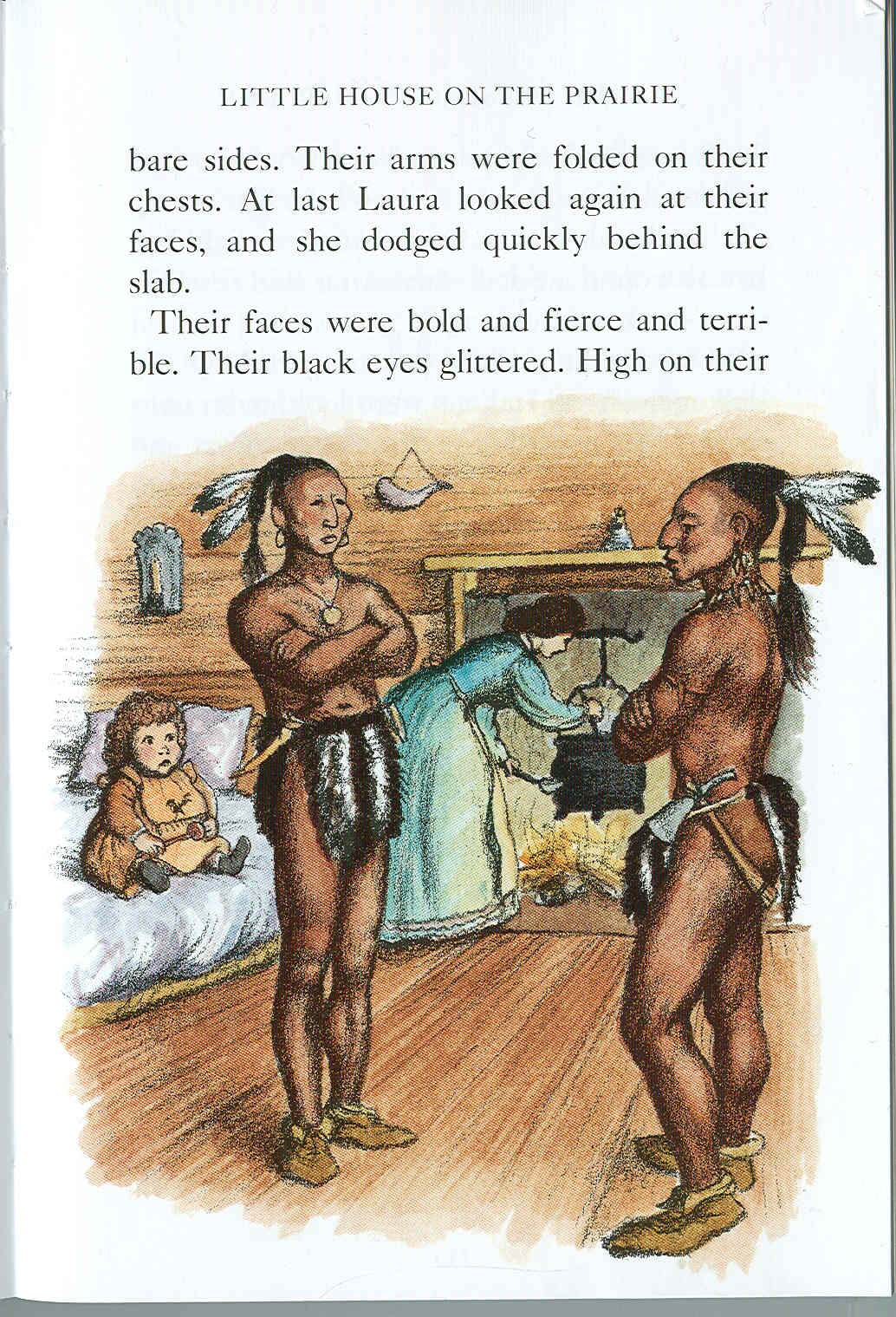A comment on the annual set of books chosen by the National Endowment for the Humanities and the American Library Association:
"We" the People?After the first "Bookshelf" list came out, several Native scholars and parents noted the complete absence of books by Native writers, while two of the books, Little House on the Prairie and The Matchlock Gun, contained extremely negative representations of indigenous people. There was no way that a Native child could find in that collection (called Courage) any images of people of his/her heritage suggesting that his/her ancestors might in fact have been courageous, or even fully human and equal in importance to the "settlers". There were more problems with that year's list, but I'll just stick to the problematic representations of indigenous North Americans.
The next year, "Freedom" was the metaphor/topic and again no works by Native writers (or illustrators) were included, though one story with a Native protagonist, by a white writer, appears--the problematic The Girl Who Loved Wild Horses by Paul Goble. The implication of this absence is that Native people's stories have no relevance in discussions of "Freedom". The irony grows painful.(Excerpted from Debbie Reese's
American Indians in Children's Literature, 6/7/07.)



Writerfella here --
ReplyDeleteThis one is that famous phrase, 'a no-brainer.' No matter the theme, Natives will be overlooked, neglected, and bereft. Like the bison, Natives are symbols of the defeat of their courage and the defeat of their freedom. Per exemplum, bison that leave the protected confines of Yellowstone Park are shot down by neighboring ranchers and state wildlife rangers. The bison still exist, as do the Natives, but their courage and their freedom cannot be acknowledged or even be permitted because those call into question the reasons that American courage and freedom ever came into existence at all. And as we all know, symbols always are attacked first, especially when they call attention to themselves...
All Best
Russ Bates
'writerfella'